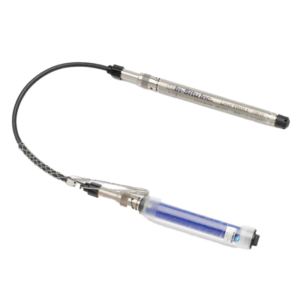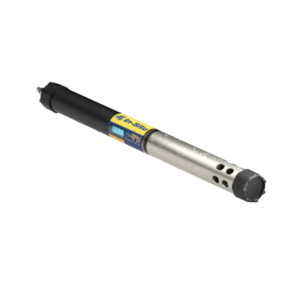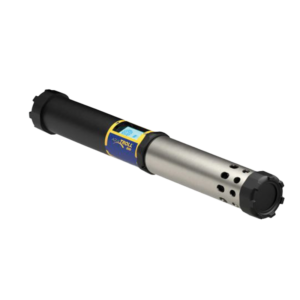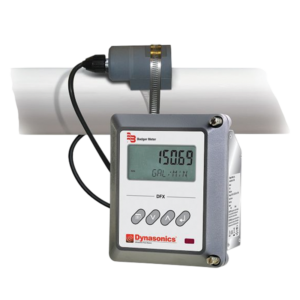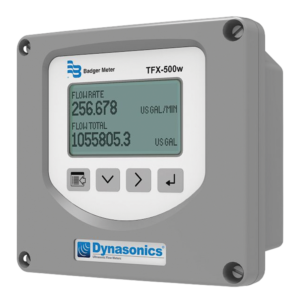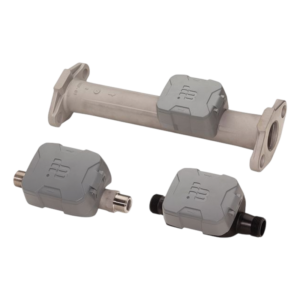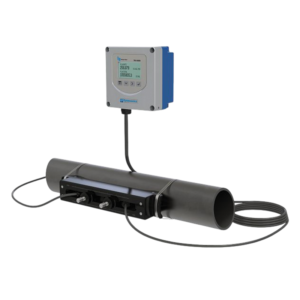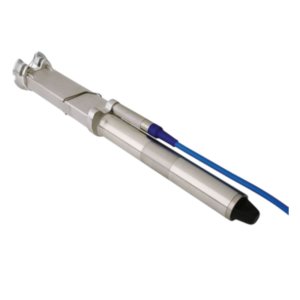Ground Water monitoring
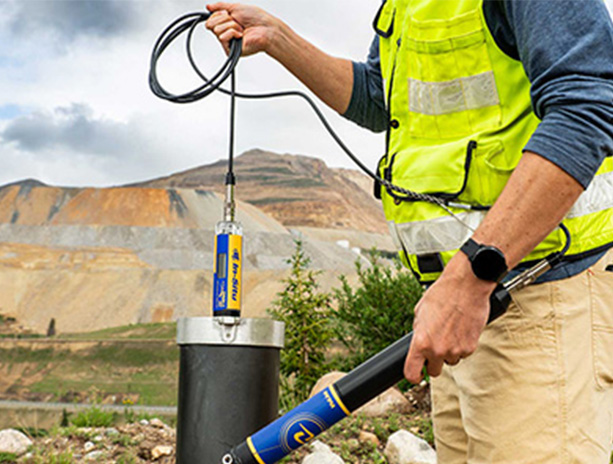
Groundwater monitoring plays a crucial role in managing and sustaining one of the Earth’s most vital resources.
As the primary source of drinking water for billions of people worldwide and a key component of agricultural
irrigation, industrial processes, and ecosystem support, groundwater must be carefully monitored to ensure
its quality and availability.
Monitoring groundwater involves the systematic collection and analysis of data from wells, piezometers, and
other subsurface measurement points. This data provides valuable insights into groundwater levels, quality,
and flow patterns. Continuous monitoring helps identify trends, detect potential contamination, and assess
the overall health of aquifers.
…
Environmental agencies, water resource management authorities, and research institutions utilize advanced
technologies such as remote sensing, satellite imagery, and sophisticated sensors to gather real-time data
on groundwater conditions. Groundwater monitoring networks are strategically positioned in areas susceptible
to over-extraction, pollution, or natural variations.
The information derived from groundwater monitoring serves multiple purposes, including early warning systems
for droughts, assessing the impact of human activities on aquifers, and guiding sustainable water management
policies. By understanding the dynamics of groundwater systems, authorities can implement effective
conservation measures and prevent the depletion or degradation of this vital resource.
In conclusion, groundwater monitoring is an essential practice to ensure the sustainability and resilience
of water resources. It empowers decision-makers with the knowledge needed to protect and manage this precious
source of freshwater for current and future generations. As the global demand for water continues to rise,
effective groundwater monitoring becomes increasingly indispensable in fostering responsible water use and
safeguarding the environment.
Related Products
Digital Water Level Recorder(DWLR)/ Piezometer/ CGWA
Ultrasonic Flowmeter for Ground Water Monitoring- Badgermeter
Level Data Logger For Ground Water Monitoring-Sommer
Groundwater monitoring is the systematic observation of underground water levels and quality to support sustainable usage, detect pollution, manage irrigation, and comply with environmental regulations. This process uses tools like observation wells, piezometers, pressure transducers, water quality probes, and IoT-enabled loggers to track trends in flow, quantity, and contamination. Techniques range from manual measurement to satellite mapping and real-time mobile-based monitoring. In India, key data sources include the Central Ground Water Board, ISRO’s Bhuvan portal, and NASA’s GRACE satellite, with live maps and regional dashboards made accessible via platforms like those offered by Aaxis Nano. Aaxis Nano integrates cutting-edge technology like ground water detectors, automated well monitoring systems, and water level check apps, enabling users—from farmers to urban planners—to access real-time groundwater level data, predict scarcity, and optimize water usage.
What Is Groundwater Monitoring?
Groundwater monitoring is the process of observing and recording changes in the quantity and quality of groundwater over time. It’s vital for:
-
- Water resource planning
- Water resource planning
-
- Irrigation management
- Irrigation management
-
- Environmental protection
- Environmental protection
-
- Pollution control
- Pollution control
-
- Urban infrastructure planning
- Urban infrastructure planning
What Are the Objectives of Groundwater Monitoring?
Understanding the objectives of groundwater monitoring helps identify why it’s essential:
-
- Track seasonal and long-term groundwater trends
- Track seasonal and long-term groundwater trends
-
- Detect contamination or over-extraction early
- Detect contamination or over-extraction early
-
- Support sustainable groundwater usage
- Support sustainable groundwater usage
-
- Comply with environmental and governmental regulations
- Comply with environmental and governmental regulations
-
- Improve water distribution strategies in agriculture and cities
- Improve water distribution strategies in agriculture and cities
How Do You Monitor Groundwater Flow?
Monitoring groundwater flow involves:
1. Installing Observation Wells
Wells are dug at specific locations to track water movement below the surface.
2. Using Piezometers
Piezometers are narrow tubes used to measure hydraulic head and flow direction.
3. Conducting Tracer Tests
These tests use chemical tracers to determine groundwater travel paths and speed.
4. Geophysical Methods
Electrical resistivity and seismic methods help visualize underground flow paths.
What Equipment Is Used for Groundwater Monitoring?
The following equipment is commonly used:
-
- Ground Water Detector: Identifies water-bearing zones underground
-
- Well Monitoring Tool: Measures water table levels, temperature, and conductivity
- Well Monitoring Tool: Measures water table levels, temperature, and conductivity
-
- Water Level Loggers: Automatically record level changes over time
-
- Pressure Transducers: Convert pressure data to accurate depth readings
-
- Telemetry Units: Send real-time data to cloud dashboards
-
- Water Quality Probes: Analyze chemical and biological parameters
Groundwater Monitoring Techniques
| Technique | Description |
| Manual Measurement | Using tapes or dip meters to record levels periodically |
| Automated Logging | Deploying data loggers in wells to collect data 24/7 |
| Remote Sensing | Satellite images show groundwater trends and depletion |
| Geophysical Mapping | Helps locate underground aquifers and flow lines |
| Mobile-Based Monitoring | Use of water level check app to access data remotely |
Groundwater Level Data India – Sources and Accuracy
India’s groundwater level data can be accessed through:
-
- CGWB (Central Ground Water Board) Data Portal
- CGWB (Central Ground Water Board) Data Portal
-
- Bhuvan ISRO Portal (India’s official geo-platform)
-
- Live dashboards from Aaxis Nano’s cloud-connected solutions
- Live dashboards from Aaxis Nano’s cloud-connected solutions
Data includes:
-
- Monthly/seasonal readings
- Monthly/seasonal readings
-
- Regional comparisons
- Regional comparisons
-
- Aquifer mapping
- Aquifer mapping
-
- Depletion risk alerts
- Depletion risk alerts
India Groundwater Satellite Map Live
Thanks to advancements in remote sensing, you can now view India groundwater satellite map live, updated regularly by:
-
- ISRO
- ISRO
-
- NASA’s GRACE satellite program
- NASA’s GRACE satellite program
-
- State groundwater monitoring agencies
- State groundwater monitoring agencies
Aaxis Nano integrates this satellite map data into user-friendly dashboards, making it actionable and accessible.
Ground Water Live Map – Track in Real Time
Ground water live maps allow users to:
-
- Monitor water levels region-wise
- Monitor water levels region-wise
-
- Predict seasonal shifts in aquifer volume
- Predict seasonal shifts in aquifer volume
-
- Plan drilling, irrigation, and urban development wisely
- Plan drilling, irrigation, and urban development wisely
Aaxis Nano provides customized live mapping services with GIS overlays for district, block, or site-specific tracking.
Water Level Check App – Real-Time Monitoring on Mobile
Want to monitor your well water level via mobile?
Our IoT-enabled systems sync with a water level check app that lets you:
-
- View real-time water levels
- View real-time water levels
-
- Get alerts for critical thresholds
- Get alerts for critical thresholds
-
- Access historical data trends
- Access historical data trends
-
- Integrate with Google Maps location tags
- Integrate with Google Maps location tags
Why Groundwater Monitoring Is Essential Today
| Benefit | Impact |
| Water Security | Ensures long-term availability of groundwater |
| Agricultural Planning | Optimizes irrigation schedules and reduces waste |
| Disaster Preparedness | Predicts droughts and groundwater scarcity zones |
| Environmental Conservation | Prevents over-extraction and salinity intrusion |
| Regulatory Compliance | Meets government mandates and data reporting standards |
Aaxis Nano – Groundwater Monitoring Solutions You Can Trust
At Aaxis Nano, we provide:
-
- IoT-Based Monitoring Systems for groundwater
-
- Advanced well monitoring tools and ground water detectors
- Advanced well monitoring tools and ground water detectors
-
- Integration with India groundwater satellite map live
- Integration with India groundwater satellite map live
-
- Mobile-compatible water level check apps
- Mobile-compatible water level check apps
-
- Real-time access to groundwater level data India
- Real-time access to groundwater level data India
-
- Solutions tailored for agriculture, government, industry, and NGOs
- Solutions tailored for agriculture, government, industry, and NGOs
Let’s Make Groundwater Smarter Together
Whether you’re an individual looking to check water level in your location, or an organization needing data-backed groundwater flow monitoring, Aaxis Nano is your go-to partner. We offer turnkey groundwater monitoring systems, backed by research, innovation, and technology—ensuring your water management decisions are smart, sustainable, and scalable.
👉 Contact us today to get a free consultation.

